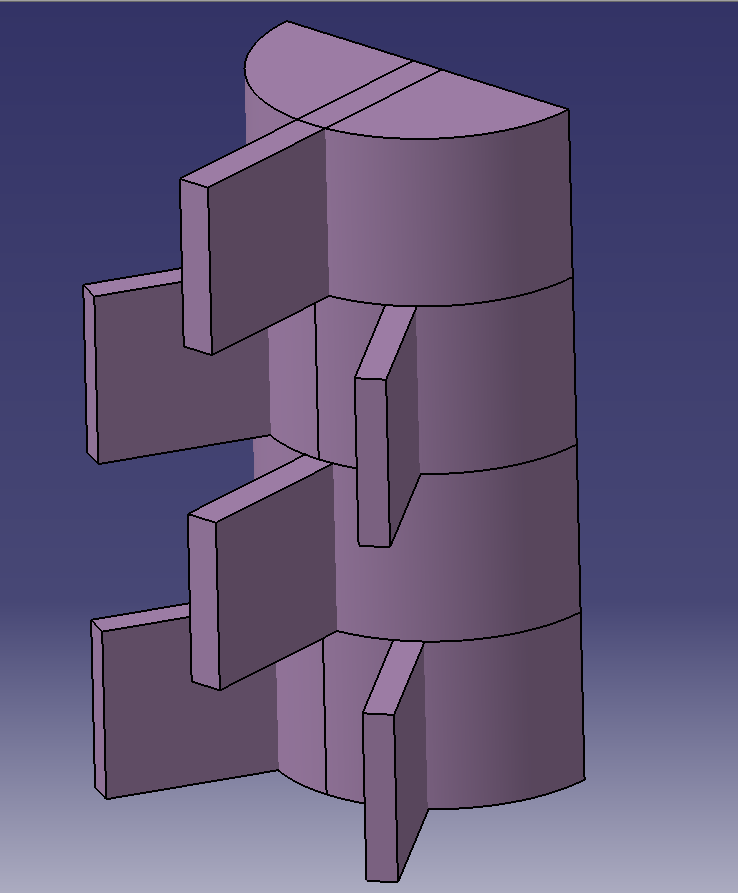
Overview
With MenTAUR, we firmly believe that we can give a hand to those who suffer from chronic stress-induced depression. Although we have done our best to accomplish the project, we understand that our research deserves more time to be more comprehensive. Consequently, we have lined up some future visions we can improve. We classify our plan into four categories: Menbles, gut environment simulation, fluorescent measurement, and probable project expansion.
Menbles
Complying with food safety regulation standards
Calcium chloride was used as the main fabrication material of Menbles. Although the concentration of calcium chloride used in bubble fabrication is still below the maximum limit[1,2], we were still concerned about Menbles acceptance by the general public due to its content.
As a result, we considered replacing the main fabrication material with calcium lactate which is believed to be safer[3], and the bubble consistency fabricated from calcium lactate is pretty similar to calcium chloride while maintaining the same bacteria immobilization as fabricated using calcium chloride[4].
Gut environment simulation
Microfluidic flow rate: 0.168 ml/h
We realize that our current flow rate can be considered too fast. This is because when we almost completed our experiment, we realized that in order for a microfluidic channel to have a laminar flow, the calculated Reynolds number should be close to 1[5]. As we recalculated the flow rate, it became :

Since the density of PBS buffer is 1067.5 kg/m3[6], the diameter of f(int) is 0.49 mm and the kinematic viscosity of PBS is 10-3 Pa.s[7]. The calculated flow is 0.168 ml/hr.
However, even that this flow rate is more suitable for microfluidic usage, this flow rate configuration will not directly with our main goal of simulating the small intestine. Other than that, because this flow rate is about 165 times smaller than the original flow rate, the experimental procedure will also be very different from what we had done.
Anaerobic environment
To make the system as close as possible to the real human intestine as possible, an anaerobic environment[8] is another important parameter. However, due to the device limitations, we finally decided to make an anaerobic environment a possible f(int) future improvement.
The reason that an anaerobic environment could not be achieved is that the porosity of PDMS is 19 ± 1.7 µm[9], much larger compared to the oxygen molecules (±0.3 nm[10]). This means, even we created an anaerobic environment in the beginning, the oxygen molecules will permeate through the pores, resulting in an aerobic environment.
Some research had been successfully performed on this concept[11], the approach is by blasting the chamber with pure nitrogen and 5% CO2 in deionized water with a flow rate of 243 ml/min for 1 hour, with this amount of flow rate, the sealing of the microchannel needed to be enhanced and is very critical for preventing any possible leakage.
Stacked configuration
Before the development of our first generation of microfluidics, we understand that our real-life human intestine is a 3-D tubular structure instead of 2-D structure (our current configuration). Stacked configuration is our vision from the start, which integrates both channel 3 (circular folds with villus 90°) and channel 4 (circular folds with 2 villi 60° & 120°) in stacked configuration on top of each other to make a 3-D structure.

Several issues need to be resolved before realizing such 3-D structure, such as the accuracy of stacking, structural integrity, and sufficient mechanical strength (as each layer was projected to be around 75 µm thick), etc.
Same scale throughout entire structure
Due to the smallest dimension that the photolithographic technique can generate by using a transparency photomask, the dimension of villi cannot be scaled down at a ratio of 1:50. A more advanced lithography technique is required to achieve even smaller dimensions such that the scale of the villi can be created at 1:50, and also there will be more villi in each circular fold.
Irregular pattern
The overall design of f(int) was created using serpentine channels and all the internal structures such as circular folds and villi were created with geometrically ordered design. However, the real human intestine folds randomly not only in the x and y direction but also into z-direction[12]. Moreover, there are 4-7 jejunum circular folds for every inch[13] in which we only simulate four-folds for every inch.
Different kinds of bacteria
Until our last experiment, we only had performed our simulation using the same bacteria which is E. coli Nissle. In order to verify that our system is actually able to simulate the human intestine, we need more data from other bacteria such as Lactobacillus. And we wanted to simulate different kinds of bacteria inserted into the channel, this is because our small intestine has a microbiome that consists of trillions[14] of bacteria from different species which interact between each other.
Fluorescent measurement
Photoluminescence
f(int) was designed to measure the retention ratio of E. coli Nissle after flowing through the channel, which is determined by OD600. In addition, a microscope equipped with mercury light was used which enables us to see clearly where the bacteria will stay inside the channel, and light reflection from E. coli Nissle which has sfGFP in it. However, it would be better if we were able to see what light spectrum our bacteria will produce through Photoluminescence.
Probable project expansion
Automatic Depression Detection System
Before settled with the microfluidic channel, we had several ideas that are instead of correlates with the wet part’s E. coli Nissle or any bacteria in general, our past ideas were directly correlated with our main topic: Depression. One idea that we had thoroughly developed is a Deep Learning system or commonly called Artificial Intelligence to detect depression through voice recognition, and the system will be able to have 2-way communication that is hoped to relieve some of the stress that people have, for further information click the tab down below :
The idea behind the Deep Learning system came from a meeting with our university principal Huey-Jen Su, when we were still new to our topic, our preliminary design was using a device similar to EEG(Electroencephalography) which will detect human brain waves and with the help of Artificial Intelligence, we eventually will be able to detect someone’s depression state.
She was interested in our idea, and she suggested we take an approach that is more accessible for public use such as sound analysis, after some research, we found a database from the University of Southern California (USC) called DaicWoz (https://dcapswoz.ict.usc.edu/) that has a sound record of more than 200 people with different level of depression.
Some research[15] had performed a similar concept as ours with the same data, their system reach an accuracy of 84.21% for female subjects and 81.25% for male subjects, with 77% accuracy when the test is as short as 10 seconds and the accuracy increases as high as 95% if the test performed for 100 seconds duration. From this fact, we believed that if we were able to finally execute the system, it will be a very big breakthrough.
If the main Deep Learning system has been completed, we planned this system to be integrated into software or phone application, and make the application requires as minimal user input as possible to make it accessible for everyone. And the main function of this application will be a record that tracks someone’s depression level throughout the day.
However, it is useless to put the effort only if the final goal is just to detect someone’s depression level, so we planned to integrate the application to act accordingly with their depression levels such as with some music therapy or even trainer for breathing techniques to reduce make them relax and feel less depressed[16].
As we developed this system, our final vision is to make it similar to an animation character from the movie Big Hero 6 named Baymax, which is a personal healthcare companion. Thus, not only detects someone’s depression level, the AI will be able to give some useful advice or even able to perform 2-way communication with the user.
References
- 食品添加物使用範圍及限量暨規格標準_消費者專區. Fda.gov.tw. Published 2017.
- CFR - Code of Federal Regulations Title 21. Fda.gov. Published 2020.
- CFR - Code of Federal Regulations Title 21. Fda.gov. Published 2020.
- Lin SH. Gelation of sodium alginate in a batch process. Chemical Engineering Science. 1991;46(2):651-655. doi:10.1016/0009-2509(91)80025-t
- Enhancing Transport in Microfluidic Systems 2.1 a Systematic Study of Mixing and Transport in Microscale Cavity Flows 2.1.1 Introduction.
- Phosphate Buffered Saline solution, 10X Concentrate | AmericanBio. Archive.org. Published 2020.
- Yeom E, Kang YJ, Lee S-J. Changes in velocity profile according to blood viscosity in a microchannel. Biomicrofluidics. 2014;8(3):034110. doi:10.1063/1.4883275
- Jalili-Firoozinezhad S, Gazzaniga FS, Calamari EL, et al. A complex human gut microbiome cultured in an anaerobic intestine-on-a-chip. Nature Biomedical Engineering. 2019;3(7):520-531. doi:10.1038/s41551-019-0397-0
- Yoon S, Seok M, Kim M, Cho Y-H. Wearable porous PDMS layer of high moisture permeability for skin trouble reduction. Scientific Reports. 2021;11(1). doi:10.1038/s41598-020-78580-z
- staff SX. New mechanisms discovered to separate air molecules. Phys.org. Published June 5, 2018.
- Jalili-Firoozinezhad S, Gazzaniga FS, Calamari EL, et al. A complex human gut microbiome cultured in an anaerobic intestine-on-a-chip. Nature Biomedical Engineering. 2019;3(7):520-531. doi:10.1038/s41551-019-0397-0
- Sketchfab. Sketchfab. Sketchfab. Published June 16, 2017. Accessed October 20, 2021. https://sketchfab.com/3d-models/the-human-digestive-system-peristalsis-854775b61faa4825975180a2fc4092d7
- Small Intestine. Imaging Anatomy: Chest, Abdomen, Pelvis. Published online 2017:636-665. doi:10.1016/b978-0-323-47781-9.50031-3
- Mun-Keat Looi. The human microbiome: Everything you need to know about the 39 trillion microbes that call our bodies home. BBC Science Focus Magazine. Published July 14, 2020.
- Chlasta K, Wołk K, Krejtz I. Automated speech-based screening of depression using deep convolutional neural networks. Procedia Computer Science. 2019;164:618-628. doi:10.1016/j.procs.2019.12.228
- Erkkilä J, Brabant O, Hartmann M, et al. Music Therapy for Depression Enhanced With Listening Homework and Slow Paced Breathing: A Randomised Controlled Trial. Frontiers in Psychology. 2021;12. doi:10.3389/fpsyg.2021.613821

